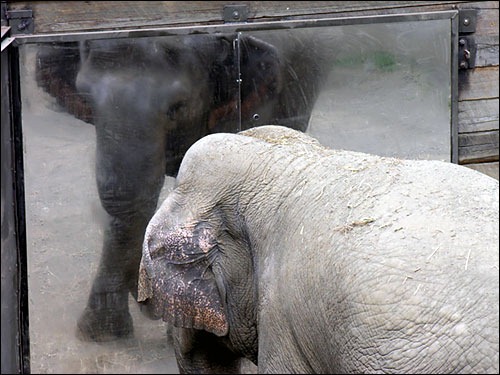Montaigne and Descartes both have very profound arguments. Montaigne argues that one can't judge that animals because we don't fully understand the animal brain. Descartes argues that they don't think therefor they are not intelligent beings.
“An Apology for Raymond Sebond” by Michel De Montaigne talks about how the notion that animals are not capable of feeling or thought is incorrect. There is no way of knowing the complexity of animals. Therefore, it is foolish to have the belief that we are the only animals that are capable of these feelings. Montaigne also states that even though they can’t verbally communicate with humans they do offer gestures.
“From the Letters of 1646 and 1649” by René Descartes discusses the idea that animals are under humans because they are not capable of thoughts. He strongly disagrees with Montaigne and does not care for understanding animals. He feels that if animals did have thoughts that they would be able to express them, since they don’t they must not have any feelings. While they may do different things from humans and are even better in some regard it is all from instinct, there is no thought process. There is also no proof that animals have a soul, which Descartes thinks contributes to thought. Finally he restates that animals do not have speech so they cannot match the level of intellect that humans have. He closes with the statement that he is all for the life of animals but that they aren’t and will never be equivalent to humans.
Part of Descartes reasoning is that we cannot communicate with animals, they cannot speak to us. However animals have complex networks of communication between themselves which should disprove his idea that they lack expression and therefore lack emotions. Even if emotion requires communication there are many animals who have very sophisticated vocalizations including elephants. They can communicate on frequencies we cannot even hear and talk with elephants 50 miles away through vibrations that are inaudible to humans.
Part of Descartes reasoning is that we cannot communicate with animals, they cannot speak to us. However animals have complex networks of communication between themselves which should disprove his idea that they lack expression and therefore lack emotions. Even if emotion requires communication there are many animals who have very sophisticated vocalizations including elephants. They can communicate on frequencies we cannot even hear and talk with elephants 50 miles away through vibrations that are inaudible to humans.
There are examples of animals displaying thought and self awareness. One was an elephant named happy who, in a mirror, was able to recognize a 'x' painted on her cheek. It was proven that she is self aware because when standing in front of the mirror she touched the 'x' on her face on her cheek, not the mirror. The display of self awareness disproves Descartes argument that animals are not capable of thought.
Further evidence of animals having thoughts is their use of tools. Fish have recently been discovered to be using rocks to smash open clam shells. This is evidence of a thought process(not just instinct) in an animal which most people give very little credit too. If this animal displays thoughtfulness we can expect it to be common in most if not all animals.
Lastly is the sad evidence of animals grieving and missing lost loved ones. Animals of all shapes and sizes can experience mourning. Elephants are known to sadly stand above lost members of their herd and dolphin mothers who lose a baby may try to keep it afloat for days unwilling to accept the death. Pets with siblings who die often take weeks or months before regaining interest in their old lifestyle, they’ll eat or play very little. It is not so important that they understand exactly what death is, but that they show some emotion towards the loss of a friend or family member which is clear evidence of feelings and ongoing thoughts.
Naja Thomas and Krysta Taylor
Section D



No comments:
Post a Comment